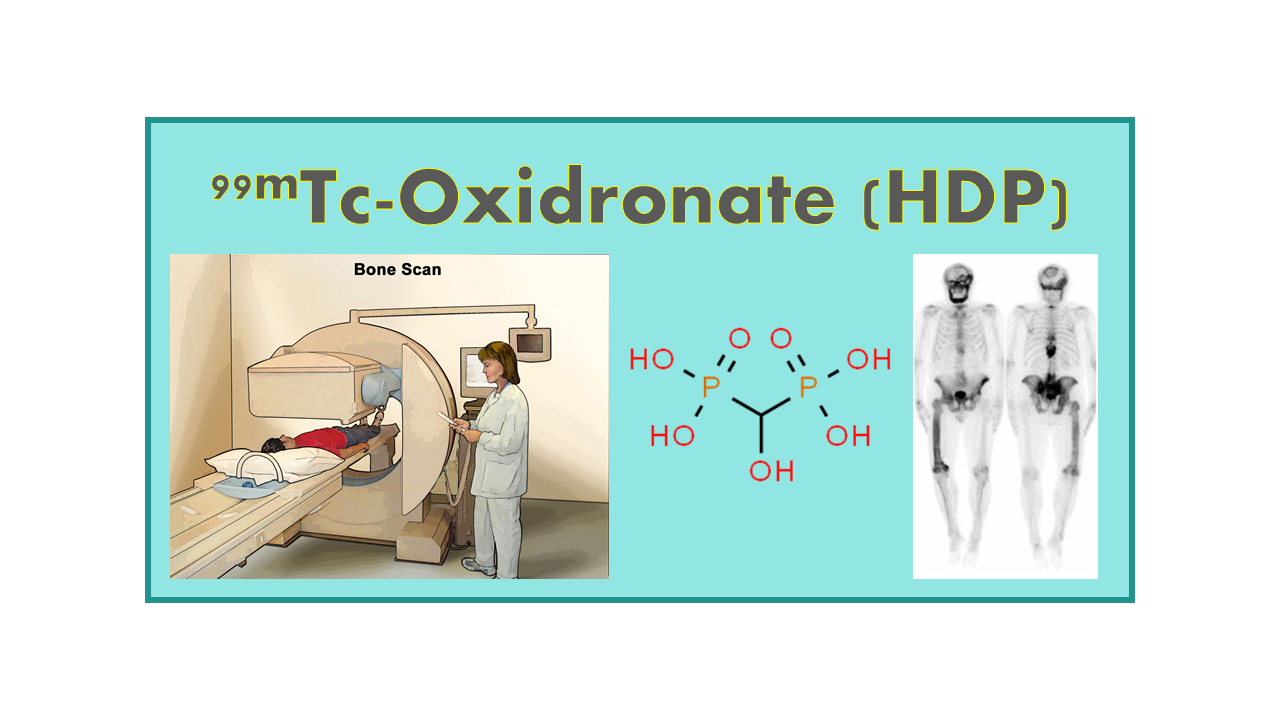
99mTc-Oxidronate (HDP)
April 12, 2024
99mTc-Oxidronate is a radiopharmaceutical agent used in nuclear medicine imaging for bone scintigraphy. This tracer is commonly employed to evaluate various bone conditions, including metastatic bone disease, bone infections, trauma, and bone tumors.
The mechanism of action of 99mTc-Oxidronate involves its binding to hydroxyapatite crystals in bone, allowing for the visualization of bone metabolism and turnover. By targeting areas of increased bone activity, such as sites of bone metastases or inflammation, 99mTc-Oxidronate scans can provide valuable information about bone health and detect abnormalities that may not be visible on conventional imaging modalities.
Bone scintigraphy with 99mTc-Oxidronate is a sensitive and specific imaging technique that can help clinicians diagnose and monitor a wide range of bone-related conditions. The results of these scans can aid in treatment planning, disease staging, and assessing treatment response in patients with bone disorders.
Overall, 99mTc-Oxidronate plays a crucial role in bone imaging and is a valuable tool in the evaluation of various bone pathologies, making it an essential component of nuclear medicine practice.
Description
99mTc-Oxidronate (99mTc-HDP, 99mTc-Hydroxymethylene diphosphonate, HMDP) is a tracer for bone scintigraphy.
Clinical applications
99mTc-HDP is a tracer with specific affinity for hydroxyapatite crystals in bone where abnormal accumulation of increased osteoid mineralization has occurred. This bone imaging agent can be used in adults and children. Doses per patient are in the range 10– 20 mCi.
Availability
Cold kits of Oxidronate are available under the names Osteocis® (IBA Molecular/Curium; marketed since 1982), Technescan HDP® (Mallinckrodt; marketed since 1995). The product sold by Mallinckrodt under the name Osteoscan was withdrawn as was TCK-21 previously sold by IBA Molecular.
In 2020 in the USA, a dose of Oxidronate is charged around US$ 50.
Competition
There are several agents useful for bone scintigraphy in both SPECT (99mTc-HEDP, 99mTc- MDP, 99mTc-DPD) and PET modalities (18F-NaF). Use is dependent upon local availability and authorizations, as well as price, but it seems that the highest quality of images is obtained with 18F-NaF, which is also the most expensive.
Comments
New radiopharmaceuticals for therapy in bone metastasized cancers such as 188Re-HEDP or 177Lu-HEDP, show a beta emission that provides a signal sufficient for imaging and in certain cases could substitute for the 99mTc-derivatives in the future.